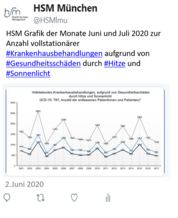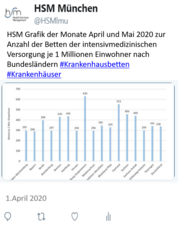Prescribing of antipsychotic drugs in patients with dementia: a comparison with age-matched and sex-matched non-demented controls.
| Autoren/Herausgeber: |
Schulze, J. Glaeske, G. van den Bussche, H. Kaduszkiewicz, H. Koller, D. Wiese, B. Hoffmann, F. |
|---|---|
| Erschienen: | 2013 |
| Publikationsart: | Articles in Refereed Journals (International) |
| ISBN/ISSN: | 1053-8569 |
| erschienen in: | Pharmacoepidemiol. Drug Saf. |
| Weitere Quellenangabe: | Volume 22(12), Pages 1308-1316 |
Abstract
Purpose
Since the beginning of the 21st century, serious adverse events and an increased risk of mortality have been documented in patients with dementia treated with antipsychotics. The aim of this study was to assess antipsychotic prescribing in patients with incident dementia compared with a non-demented control group.
Methods
We analysed the claims data of a German health insurance company for incident dementia patients and age-matched and sex-matched non-demented controls aged 65 years and older in 2004 to 2006. The data were used to analyse the prescribing patterns of antipsychotics in the year of dementia incidence. We estimated odds ratios stratified by age, sex, care setting and care dependence and in a multivariate logistic regression.
Results
The 1848 patients with and 7385 persons without dementia were on average 78.8 years old (standard deviation: 7.4), and 47.6% were women. A total of 25.4% of the dementia patients received antipsychotics compared with 4.3% of the controls (ORcrude: 7.61; 95%CI: 6.52–8.87). An increase in care level, age, female gender and living in a nursing home is associated with a considerably higher prevalence of at least one prescription for antipsychotics. After adjusting for all these variables, a significant influence of age could no longer be found.
Conclusions
The results show that antipsychotics play an important role in dementia care—despite the risk of adverse events. Further research is needed with regard to safe pharmacological and non-pharmacological approaches for the behavioural and psychological symptoms of dementia in this vulnerable group. Copyright © 2013 John Wiley & Sons, Ltd.





